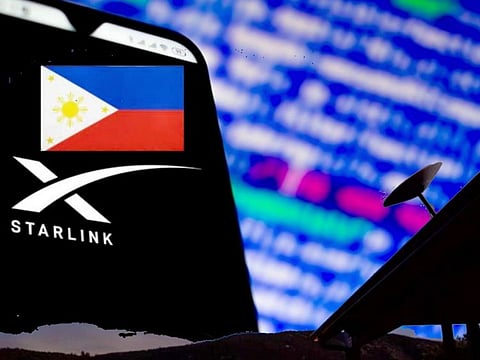Starlink goes 'live' in the Philippines: Space X
Space X switches on service with Data Lake and covers entire archipelago

Manila: Starlink, the broadband internet service of Elon Musk’s Space X is now available in the Philippines, the company announced Wednesday.
The reusable rocket company sent out a tweet in Tagalog-English: “Available na ngayon ang Starlink sa Pilipinas (Starlink is now available in the Philippines)" on February 22, with a map that shows it’s now live throughout the archipelago, which comprises of 7,640 islands.
Customers can now place orders for the "starter kit" hardware to subscribe to the service.
Last year, SpaceX formed is partnership with Manila-based Data Lake, controlled by the Sy family, the Philippines’ biggest retailer, and Anthony Almeda. Data Lake is the first Starlink integrator in the country.
In January, the company announced that customers seeking to buy the hardware, satellite dish and router, can place orders.
Customers may purchase the kit online, for Php29,230 ($530), which is then delivered to their address.
Following a 30-day trial period, a Php2,700 (about $49) monthly service fee is also charged, Gadget Match reported.
SPEED
The company website states that a speed of between 50 to 200 Mbps will be avaiable to Philippines-based users.
A new Philippine law allowing 100% foreign ownership of key industries in the Philippines, including telecommunications, has prompted Starlink to set up shop in the Philippines. Manila's telecom industry regulator granted was granted on Friday (May 27).
Starlink could help boost existing web service, especially in hard-to-reach and remote areas, as well as emergency response in the natural disaster-prone southeast-Asian nation.
Because the service relies on its own hardware, software and satellites, Space X said the system can cope with disruptions caused by inclement weather. It's not clear how it would perform in cloudy skies, which is often the case in the Philippines during the monsoon months.
As of February 2023, Starlink consists of over 3,580 mass-produced small satellites in low Earth orbit (LEO), which communicate with designated ground transceivers. In total, nearly 12,000 satellites are planned to be deployed, with a possible later extension to 42,000.
Sign up for the Daily Briefing
Get the latest news and updates straight to your inbox



